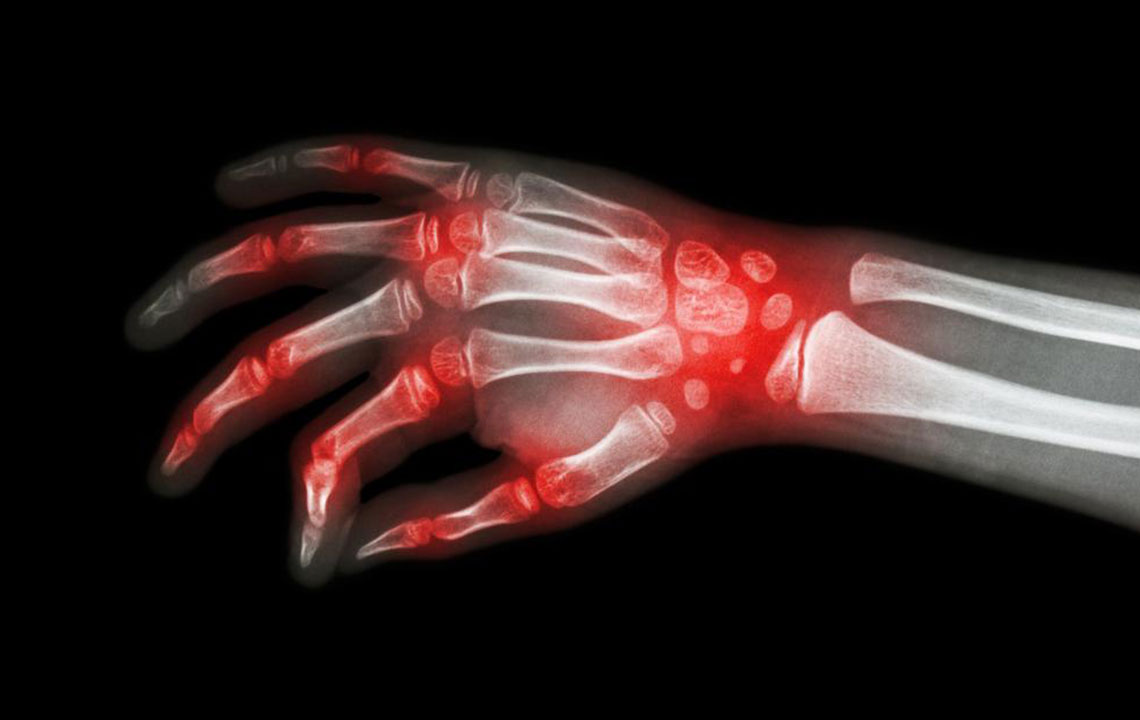Comprehensive Guide to Differentiating Rheumatoid Arthritis and Systemic Lupus Erythematosus
This comprehensive guide details the key differences between rheumatoid arthritis and systemic lupus erythematosus, highlighting symptoms, causes, diagnostic methods, and treatment options. Early diagnosis and tailored management are essential for better health outcomes. Learn about how these autoimmune diseases impact the body and the importance of professional medical care.

Understanding the Key Differences and Similarities Between Rheumatoid Arthritis and Systemic Lupus Erythematosus
Autoimmune diseases are complex conditions where the body's immune system erroneously attacks its own tissues, leading to a wide range of symptoms and health complications. Among these, Rheumatoid Arthritis (RA) and Systemic Lupus Erythematosus (SLE), commonly known as lupus, are two prominent disorders that, despite sharing some overlapping features, are fundamentally different in their causes, affected organs, progression, diagnosis, and management. Understanding these distinctions is essential for early diagnosis, effective treatment, and improving the quality of life for those affected.
In this comprehensive guide, we explore the underlying mechanisms, clinical presentations, risk factors, diagnostic procedures, and treatment options for RA and lupus. Recognizing the specific features of each condition can assist patients and healthcare providers in making informed decisions about management strategies and lifestyle adjustments to mitigate impact and prevent complications.
What is Rheumatoid Arthritis?
Rheumatoid arthritis is a chronic inflammatory disorder primarily targeting the synovial membrane—the lining of joints. It is characterized by symmetrical joint inflammation, swelling, pain, and eventual joint degeneration if left untreated. RA is classified as an autoimmune disease because immune cells mistakenly attack healthy joint tissues, leading to persistent inflammation and joint damage.
The exact cause of RA remains unknown, though genetic susceptibility, environmental triggers such as smoking, and hormonal influences have been identified as contributing factors. The disease typically manifests between ages 25 and 50, with women being disproportionately affected—up to three times more than men. The hallmark of RA includes morning stiffness lasting longer than an hour, joint warmth, and deformities over time, especially in fingers, wrists, and knees. If diagnosis and treatment are delayed, RA can lead to severe disability due to joint erosion and bone damage.
What is Systemic Lupus Erythematosus?
Lupus, on the other hand, is a systemic autoimmune condition that can impact multiple organs and tissues in the body. It involves the production of various autoantibodies that attack healthy tissues, leading to inflammation, tissue damage, and organ dysfunction. Unlike RA, which primarily affects joints, lupus exhibits a wide array of symptoms that often fluctuate in severity and can involve the skin, kidneys, heart, lungs, blood cells, and nervous system.
Lupus is more common in women aged 15-40 and has a higher prevalence among African American, Hispanic, and Asian populations. The disease's hallmark lies in its unpredictable course, with phases of relapses and remissions. Symptoms may include fatigue, skin rashes (notably the butterfly-shaped rash on the face), joint pain, fever, and inflammation in vital organs. Ongoing damage to organs like the kidneys can be life-threatening if not appropriately managed. Early diagnosis is crucial, as untreated lupus may progress rapidly, leading to severe complications.
Commonalities and Differences in Symptoms
While both RA and lupus can present with joint pain and systemic symptoms like fatigue and fever, several distinguishing features help differentiate them. RA predominantly causes symmetrical swelling and stiffness in small joints, with symptoms worse in the morning. It rarely affects internal organs directly unless advanced.
Lupus, however, might present with skin rashes, sensitivity to sunlight, and organ-specific symptoms such as kidney inflammation (nephritis), chest pain from pericarditis, and neurological manifestations. Its hallmark is the presence of specific autoantibodies, such as anti-nuclear antibodies (ANA). The symptoms of lupus tend to be more variable and can involve multiple organ systems simultaneously, whereas RA primarily involves joints.
Genetic, Hormonal, and Environmental Factors
Both conditions appear to involve genetic predispositions, with certain gene variants increasing susceptibility. Environmental factors like smoking, infections, and exposure to sunlight can trigger or exacerbate both diseases. Hormonal influences, especially estrogen, play a role, which partly explains the higher prevalence among women.
Diagnosis and Diagnostic Tests
The diagnosis of RA and lupus is complex and relies on a combination of clinical evaluation, laboratory tests, and imaging studies.
Rheumatoid Arthritis: Diagnosis involves assessing joint symptoms, physical examination findings, blood tests measuring rheumatoid factor (RF), anti-cyclic citrullinated peptide (anti-CCP) antibodies, elevated inflammatory markers (ESR, CRP), and imaging techniques such as X-rays to detect joint erosion and deformity.
Lupus: Diagnosis is based on clinical criteria such as skin rash, arthritis, kidney involvement, and hematological abnormalities, along with laboratory findings like positive ANA tests, anti-dsDNA, anti-Smith antibodies, and complement levels. Skin biopsies and organ-specific tests may also be used to assess organ damage.
Treatment Approaches and Management
Early and appropriate treatment is vital to prevent irreversible joint damage in RA and organ damage in lupus. Both conditions require tailored management strategies, often involving a multidisciplinary team of rheumatologists, dermatologists, nephrologists, and other specialists.
Rheumatoid Arthritis: Treatment includes disease-modifying antirheumatic drugs (DMARDs) like methotrexate, biologic agents such as TNF inhibitors, NSAIDs for symptom relief, and corticosteroids in acute phases. Physical therapy and lifestyle modifications, including weight management and joint protection strategies, are also important.
Lupus: Management involves immunosuppressive medications such as corticosteroids, antimalarials like hydroxychloroquine, and immunomodulators. Regular monitoring of organ function and addressing specific symptoms are crucial. Lifestyle changes include sun protection and smoking cessation.
Prognosis and Living with These Conditions
Both RA and lupus are chronic conditions with variability in disease progression among individuals. With modern treatments, many patients achieve remission or low disease activity, significantly improving quality of life. However, lupus patients face a higher risk of serious complications like kidney failure, cardiovascular disease, and infections, emphasizing the importance of ongoing medical care and lifestyle management.
Importance of Early Diagnosis and Regular Monitoring
Recognizing early symptoms and seeking prompt medical attention are paramount in managing autoimmune diseases effectively. Regular monitoring allows for timely adjustments in therapy and helps prevent long-term damage. Patients should work closely with their healthcare team to develop personalized treatment plans, adhere to medication regimens, and adopt healthy lifestyle habits.
Consulting Healthcare Professionals
If experiencing persistent joint pain, unexplained fatigue, skin rashes, or other systemic symptoms, consulting a rheumatologist or primary care provider is recommended. Proper diagnosis and early intervention can significantly alter the course of these diseases and improve outcomes.
In conclusion, while rheumatoid arthritis and systemic lupus erythematosus share some overlapping features, thorough understanding of their distinctive characteristics enhances diagnosis, treatment, and patient care. Awareness and education are vital for patients and healthcare providers to navigate the complexities of these autoimmune disorders effectively.





